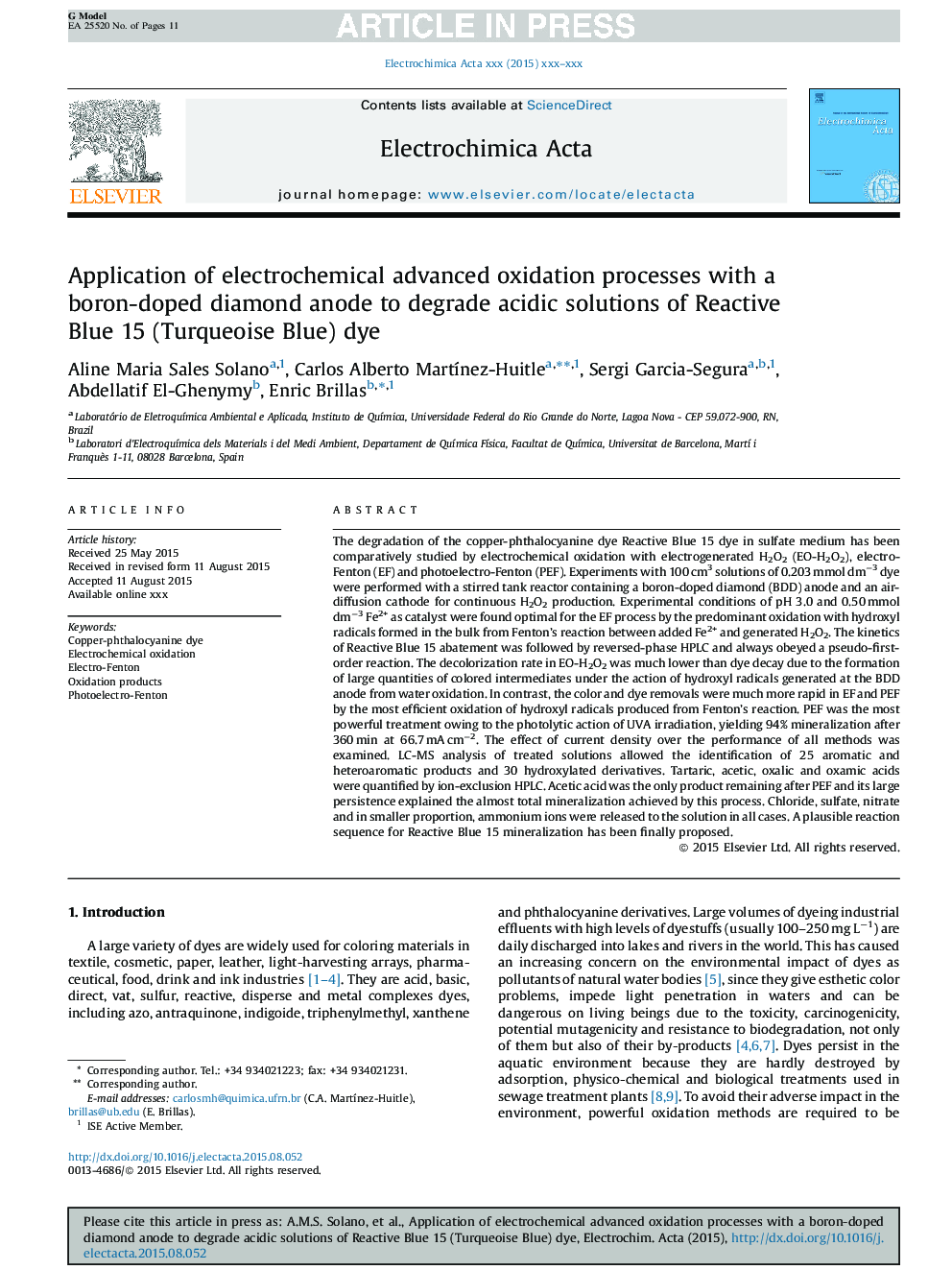| کد مقاله | کد نشریه | سال انتشار | مقاله انگلیسی | نسخه تمام متن |
|---|---|---|---|---|
| 6608072 | 459535 | 2016 | 11 صفحه PDF | دانلود رایگان |
عنوان انگلیسی مقاله ISI
Application of electrochemical advanced oxidation processes with a boron-doped diamond anode to degrade acidic solutions of Reactive Blue 15 (Turqueoise Blue) dye
دانلود مقاله + سفارش ترجمه
دانلود مقاله ISI انگلیسی
رایگان برای ایرانیان
کلمات کلیدی
موضوعات مرتبط
مهندسی و علوم پایه
مهندسی شیمی
مهندسی شیمی (عمومی)
پیش نمایش صفحه اول مقاله

چکیده انگلیسی
The degradation of the copper-phthalocyanine dye Reactive Blue 15 dye in sulfate medium has been comparatively studied by electrochemical oxidation with electrogenerated H2O2 (EO-H2O2), electro-Fenton (EF) and photoelectro-Fenton (PEF). Experiments with 100 cm3 solutions of 0.203 mmol dmâ3 dye were performed with a stirred tank reactor containing a boron-doped diamond (BDD) anode and an air-diffusion cathode for continuous H2O2 production. Experimental conditions of pH 3.0 and 0.50 mmol dmâ3 Fe2+ as catalyst were found optimal for the EF process by the predominant oxidation with hydroxyl radicals formed in the bulk from Fenton's reaction between added Fe2+ and generated H2O2. The kinetics of Reactive Blue 15 abatement was followed by reversed-phase HPLC and always obeyed a pseudo-first-order reaction. The decolorization rate in EO-H2O2 was much lower than dye decay due to the formation of large quantities of colored intermediates under the action of hydroxyl radicals generated at the BDD anode from water oxidation. In contrast, the color and dye removals were much more rapid in EF and PEF by the most efficient oxidation of hydroxyl radicals produced from Fenton's reaction. PEF was the most powerful treatment owing to the photolytic action of UVA irradiation, yielding 94% mineralization after 360 min at 66.7 mA cmâ2. The effect of current density over the performance of all methods was examined. LC-MS analysis of treated solutions allowed the identification of 25 aromatic and heteroaromatic products and 30 hydroxylated derivatives. Tartaric, acetic, oxalic and oxamic acids were quantified by ion-exclusion HPLC. Acetic acid was the only product remaining after PEF and its large persistence explained the almost total mineralization achieved by this process. Chloride, sulfate, nitrate and in smaller proportion, ammonium ions were released to the solution in all cases. A plausible reaction sequence for Reactive Blue 15 mineralization has been finally proposed.
ناشر
Database: Elsevier - ScienceDirect (ساینس دایرکت)
Journal: Electrochimica Acta - Volume 197, 10 April 2016, Pages 210-220
Journal: Electrochimica Acta - Volume 197, 10 April 2016, Pages 210-220
نویسندگان
Aline Maria Sales Solano, Carlos Alberto MartÃnez-Huitle, Sergi Garcia-Segura, Abdellatif El-Ghenymy, Enric Brillas,